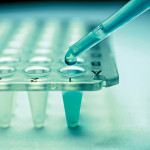Researchers have reported encouraging results from a clinical trial of a gene therapy approach to treat HIV. The study, reported last week at the 15th Conference on Retroviruses and Opportunistic Infections, involved nine patients given a single intravenous infusion of their own immune cells that had been modified using a therapeutic gene called antisense, in an attempt to make the cells resistant to HIV infection.
Humans have between 50,000 and 100,000 genes that regulate how cells behave in the body. That is, genes can either “turn on” or “turn off” virtually any function that a cell is capable of.
Researchers have learned a great deal about the genes responsible for certain cellular activities. This has set the stage for additional research into ways to alter patients’ genetic material to fight or prevent diseases.
Gene therapy involves introducing genetic material into a person’s cells to turn specific functions on or off. In the case of HIV, turning off certain CD4 cell functions may help protect CD4 cells from becoming infected with HIV or from producing new virus. Alternatively, gene therapy might be used to turn on certain CD4 cell functions, potentially causing HIV-infected cells to self-destruct or to begin producing HIV so that standard HIV medications can go to work.
Gene therapy is complicated, as a gene cannot be directly inserted into a person’s cell. It must be delivered to the cell using a vehicle, or “vector.” The vectors most commonly used in gene therapy are viruses, given that they have a unique ability to recognize certain cells and insert their DNA into the cells. In gene therapy—as well as vaccine research using this approach—developing a vector involves replacing the genes in the virus that cause disease with those that are intended to have the desired effect on cells.
VRX496, developed by VIRxSYS Corporation, is the first to use HIV itself as a vector—HIV that has had its genetic material removed, leaving only its outer shell (envelope). The envelope is then fitted with therapeutic material called antisense.
The antisense molecule is the mirror image of the gene responsible for producing new envelopes for the virus. When the modified CD4 cells are given back to the patient, the antisense gene is permanently integrated into the cellular DNA. When the virus starts to replicate inside the host cell, the antisense gene prevents the production of the envelope (env) gene, thereby shutting down HIV replication.
According to the most recent VRX496 experiments, reported at CROI by Vladimir Lukashov, PhD, of the Department of Human Retrovirology at the University of Amsterdam, and his colleagues, 40 HIV-positive patients have received one infusion of his or her own gene-modified CD4 cells. The target dose was 10 billion cells, which is about 2 to 10 percent of the number of CD4 cells in an average person.
Dr. Lukashov’s group has thus far evaluated HIV samples from nine study volunteers. One month post-infusion, patient’s viruses were missing the critical env gene. Two months post-infusion, viral loads were undetectable in eight of the nine patients; in the one patient in whom viral load was detectable, the harvested HIV was found to be env deficient, severely mutated and suffering from poor replication capacity—a weakened ability to infected CD4s.
The CD4 cell count remained steady or increased after the infusions. Dr, Lukashov’s group was able to detect the gene-modified cells for up to three years, suggesting that genetically modified cells do not die quickly and may have long-lasting therapeutic benefits in the body.
VIRxSYS is now conducting a Phase II study in which patients will receive six infusions, not just one. The clinical trial is designed to evaluate the safety of multiple infusions and to test the effect of infusions on the patients’ ability to control HIV after stopping their standard HIV treatment. The hope, the company says, is that this treatment approach may ultimately allow patients to stay off HIV treatment for extended periods of time.





4 Comments
4 Comments